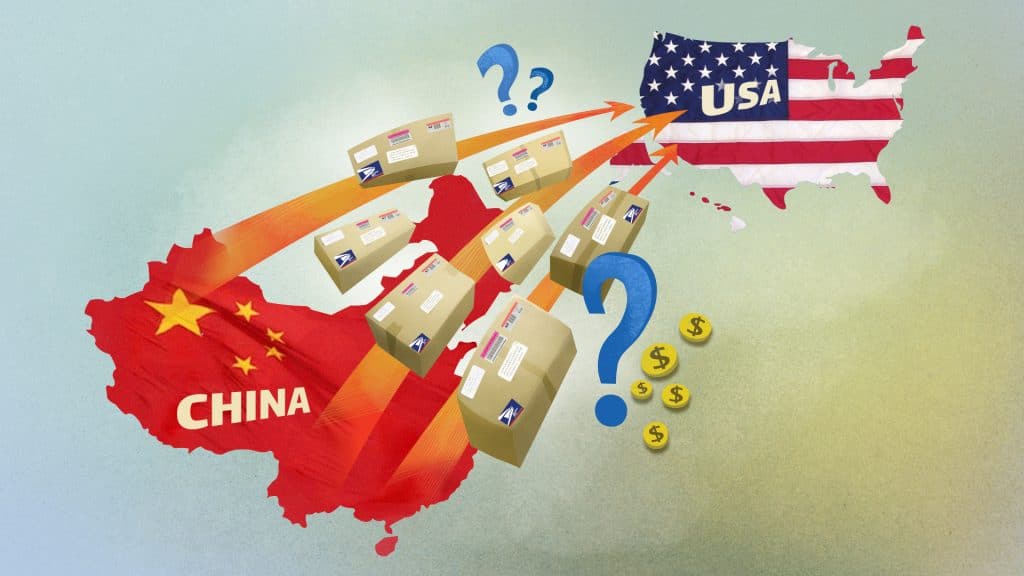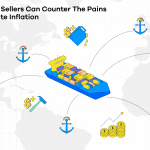
Recently, the Trump administration announced its intention to withdraw from the Universal Postal Union (UPU).
For 144 years, the multilateral treaty has been the governing force in setting international parcel shipping rates.
One of the main facets of the UPU is a ranking structure that allows economically disadvantaged countries to pay discounted rates to ship packages internationally while more economically advanced countries pay more.
Many, including the Trump administration, claim the UPU is inherently unfair.
From the outset, the UPU intended to help level the playing field for developing nations by lowering the cost of doing business.
Reduced shipping costs could allow developing economies to distribute their goods at a lower transactional cost, enabling them to compete in the global economy.
Fast forward to today. Although China is one of the world’s largest economies, it is also one of the largest beneficiaries of the UPU parcel shipment discounts.
According to the UPU, China is ranked as a ‘developing country’—a status the country uses to reap huge trade benefits.
“How is that possible?” you ask.
Simple.
The UPU’s list of member countries’ contribution classes (the metrics used to set international shipping rates) has not been updated since the 1960s, long before China’s rise as a global economic superpower.
While countries like the United States, Japan, and France are at the maximum contribution class rating of 50 units, China has a significantly lower rating of 25 (a ranking shared by smaller economies like Italy and Spain).
As a result, the combination of China’s below-market international shipping costs and high volume of exports has cost the United States hundreds of millions of dollars per year.
American shipping companies (and ultimately American taxpayers) have been left to foot the bill for the difference between what China pays to export its goods and what it costs to deliver them stateside.
To compensate, the American retail and manufacturing sectors have spent years scrambling to find ways to overcome China’s growing advantages in production and delivery.
While some have succeeded, the deck is stacked in China’s favor.
That said, if the federal government succeeds in either renegotiating the terms of the UPU or pulling out of it altogether, the jig might finally be up.
US sellers may finally be able to compete with the abundance of inexpensive Chinese imports in the American marketplace.
Correcting the Imbalance Between Domestic Sales and Chinese Exports
As it stands, it is cheaper to ship a small package from China to New York than to ship the same package across town.
Combine that with the fact that many American retailers have to contend with already lower-priced, trademark-infringing Chinese products, and you will wind up in situations like the Mighty Mug.
This New Jersey company’s self-stabilizing mug faced a direct challenge from a Chinese competitor that (dubiously) produced a cheaper version of the product and was able to deliver it to customers in the United States at a lower overall cost than the original (which was shipped from within the United States).
Although withdrawing from an archaic postal treaty may not seem like a big deal, it could be a game-changer for America’s domestic retailers and manufacturers.
These have been increasingly undercut by Chinese competition, particularly in the e-commerce space.
If China is forced to start paying their fair share of international shipping costs on their exports, Chinese retailers will have a harder time selling retail directly to American consumers.
For most American third-party sellers, this will be a win on multiple levels:
- In most cases, passing the increased shipping costs from China to the American consumer will destroy their competitive price advantages over domestic goods.
- Increased shipping costs will force many Chinese retailers to choose slower shipping options that are less attractive to US buyers.
- Expedited shipments from China will become prohibitively expensive for Chinese retailers already operating on paper-thin margins.
As a bonus, withdrawal from the UPU may allow American sellers to become more competitive when selling abroad.
Just as China enjoys favorable rates for shipping goods to the US, it can also export goods to other UPU nations like the UK and Germany at much cheaper rates than American sellers pay.
Stripping away China’s competitive edge in global retail will improve the potential profitability of American exports.
How the Chinese Government Will Respond
Gauging Chinese response has been an ongoing challenge in Trump’s trade war maneuverings with China.
So far, both sides have employed a definite tit-for-tat approach, escalating tariffs and trade restrictions, but shipping is different.
China exports many more goods to the United States than they import.
This is largely thanks to the UPU; while it is inexpensive to ship from China to the United States, it is quite costly to ship from the United States to China.
Hence, the main US exports to China are high-priced luxury goods where the profit margins are large enough to offset the steep delivery costs.
Should China choose to strike back against American withdrawal from the UPU with shipping increases of their own, it probably won’t matter much.
Big spenders in China are unlikely to flinch at modest increases in the price of their already expensive, high-end imports. Demand will remain.
As a result, the American luxury goods industry, which relies on Chinese buyers, is unlikely to see an appreciable dip in exports.
How Chinese Sellers Will Respond
An end to American involvement in the UPU will not end Chinese retail presence in the United States, but it will certainly alter it.
While it has become increasingly popular for Chinese retailers to sell directly to international customers through popular marketplaces like eBay or AliExpress, sellers opting to remain in these channels will feel the sting of increased shipping rates and lengthy shipping times.

Chinese retailers will likely increasingly opt to ship products in bulk to US fulfillment centers and use services like Fulfillment By Amazon (FBA) or Shipped by Newegg.
Utilizing these states-side fulfillment centers for popular items means that the goods can be delivered to customers quickly using Amazon Prime or Newegg Premier.
Some Chinese retailers are already taking advantage of this practice—especially since Chinese container shipments can take over a month to arrive in the United States by boat.
Regardless of the UPU, importing inventory into the country before a retail sale to an American customer allows for a faster turnaround from purchase to delivery.
Expect even more Chinese retailers to rely upon fulfillment center sales if shipping rates increase.
American third-party sellers that rely on Chinese imports can take advantage of this approach as well.
The Sellercloud inventory management system provides users with tools to manage inbound shipments to fulfillment centers like Amazon and Newegg.
From there, inventory is adjusted, and the cost of goods sold can be efficiently tracked and analyzed.
That said, relying on bulk exports and fulfillment centers is challenging.
Products in warehouses are very different from those produced on demand. Fulfillment center inventory must be pre-configured and waiting for a potential sale.
Sellers lose physical contact with their goods once they are in the hands of the fulfillment center (especially if the seller is halfway around the world).
Thus, as more and more companies begin selling their inventory using fulfillment center models, there is less potential for customization and product variety.
Amazon has addressed this issue with their Seller Fulfilled Prime program.
In the program’s first few years, Sellercloud has already seen trends showing that many existing FBA merchants have used Seller Fulfilled Prime to add additional product varieties to their marketplace offerings.
This approach has allowed sellers to move beyond the limitations of FBA while still taking advantage of the valuable Prime badge on their listings.
Moreover, since Seller Fulfilled Prime relies on sellers’ warehouses rather than Amazon’s, you enjoy more control over the fulfillment process than overseas competitors.
Chinese e-commerce retailers must make significant adjustments if they lose their competitive shipping advantages.
Making matters worse for them, many of their remaining options for reducing shipping costs and streamlining distribution will finally be able to be matched or bested by American sellers.
Be Prepared
It is important to note that withdrawal from the UPU is a yearlong process. During that time, the White House has stated that it will seek to renegotiate the terms of American involvement in the UPU.
The UPU’s current list of developing nations is nearly fifty years old, predating not only China’s rise as an economic juggernaut but also modern economic cornerstones like FedEx and the Internet.
Whether America withdraws from the UPU or simply renegotiates, China’s shipping rates to the United States will change dramatically in the coming year.
In the meantime, there are things you can do to improve your business’s competitiveness regardless of what international shipping changes may come.
With the Sellercloud inventory management system, American third-party e-commerce sellers have already begun positioning their businesses to compete domestically and internationally.
They utilize our tools to transition third-party ecommerce into more lucrative business models, such as first-party dropship sales, invoiced business-to-business sales, and private-label retail.
Whatever model you choose for your company’s online retail presence, Sellercloud has the tools to manage everything, including inventory, invoices, shipping, and tracking every component of the cost of goods sold.
Contact us directly to learn more about how Sellercloud can help make your business stronger today and better prepared for whatever changes may come in the future.




